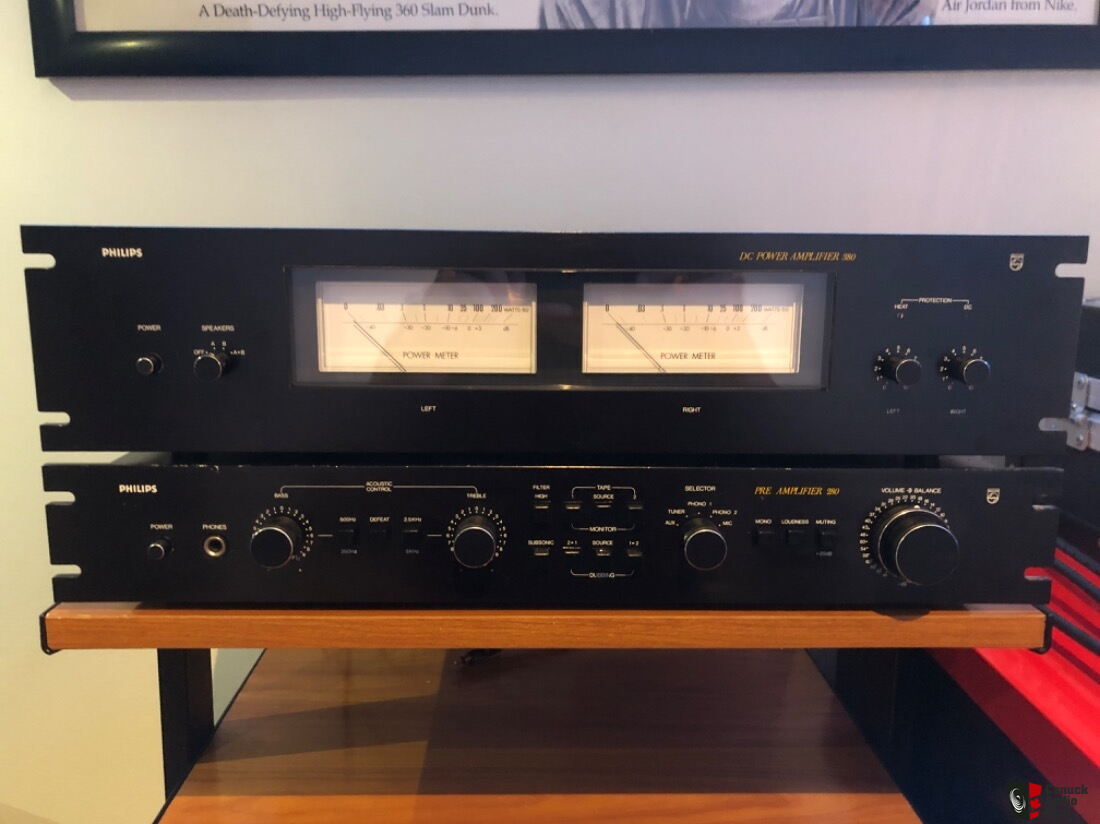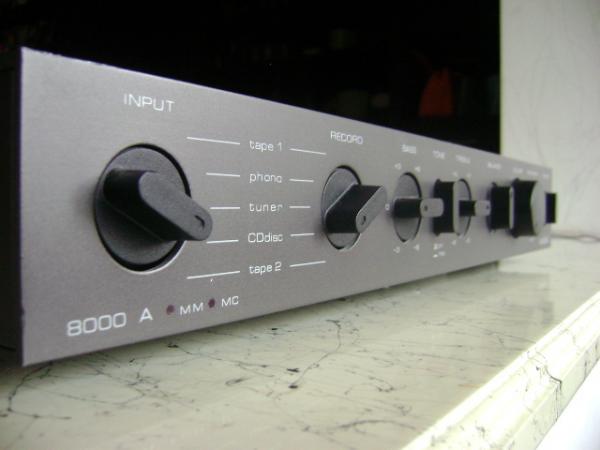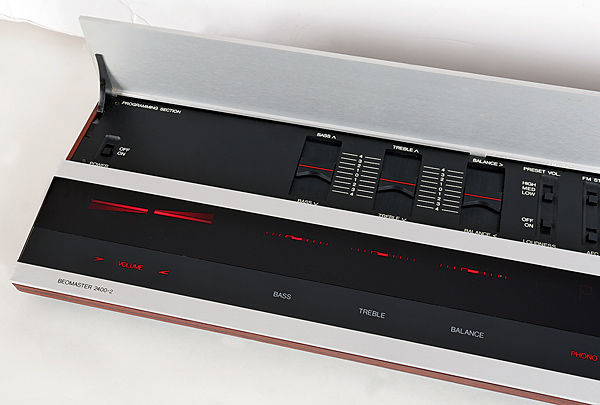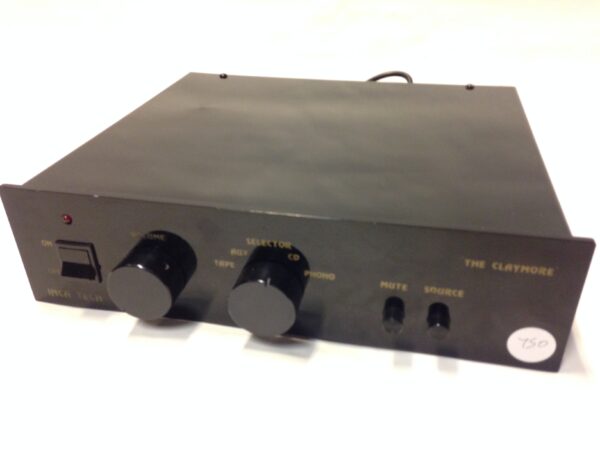This monstrous integrated amplifier, which cost £3,499 when it was first released a decade ago, was a Sugden A21a on steroids. The IA-4 set out to provide that crystalline Class A sound to a larger audience, with significantly increased power and additional features. The biggest difference between it and its smaller A21a S2 sibling was its size; it’s a hefty 22kg behemoth with style that’s more reminiscent of Japanese monster integrated models than anything from British shores. The big casing is all about providing enough cooling for its entire Class A circuitry, which, like the A21a S2, runs hot. It’s chunky at 165x430x440mm, but it’s not full of air.
“Extract the greatest performance possible from our A21a pure Class A output stage,” said Patrick Miller of Sugden. Despite being based on the A21a’s architectural principles, it is a significantly more sophisticated and evolved machine.” It was said to have new higher-spec multi-emitter output transistors, redesigned power output boards, a custom power transformer and power supply, solid silver Teflon-coated loudspeaker wiring, silver plated steel mil spec coaxial signal wires, and a current feedback preamplifier stage with nearly constant bandwidth.
The only significant resemblance to the A21a, according to Sugden, is the Class A output circuit, which was heavily reworked and relocated to new circuit boards, with meticulous capacitor smoothing and increased power supply headroom. The power supply was “massively overengineered,” with the main smoothing and decoupling capacitors being three times the physical size of the normal A21a with far greater current capabilities, although being regulated at 32 watts per channel. The single ended HT voltage and quiescent current setting were both increased by 30% as a result of this.
With a single-end power output stage and a dual voltage DC coupled preamplifier, it’s an interesting hybrid design. This necessitates the use of two different power supply in a single box to provide a real pre-power combination. “The preamplifier needs a dual voltage to operate our current feedback Open-Loop Transimpedance design — this has a wide-bandwidth capability and low distortion,” Patrick Miller noted. With high-quality silver contacts, all inputs and outputs are relay switched. A movable phono stage, based on a dual bipolar/JFET operational amplifier, was included as standard.
The IA-4 is a well-made device, although it lacks the silkiness of competing Japanese-made Marantzs, for example. “One of the best grades of aluminium available called gauge plate, a ground flat plate utilized in the fabrication of dies and precision jigs,” Sugden noted of the front panel. All fine and nice, but the volume control lacks the precision you’d expect for the price, and the casework is uncomfortably resonant. You get a pretty undamped sounding ‘ding’ when you rap the top plate with your knuckles. Titanium (silver) and Graphite were the two finishes available (black).
It has the same large, open, and startlingly translucent sound as the A21a, but with more of it. It’s like opening your bedroom curtains to a crisp, bright summer morning – but with more of it. Indeed, one of the latter’s main flaws has always been its lack of strength, which is considerably less of an issue here. Because most of what used to prevent the enjoyment of the company’s great amplifiers has vanished, you could call it “Class A without Tears.” This amplifier isn’t as powerful as a superb Class AB design like the Naim SuperNait, but it’s unconcerned about the speakers it’s driving. You no longer need to look for particularly easy loads or limit yourself to low volumes.
It’s a razor-sharp, lightning-fast sound. Its upper midband is a little brighter than most transistor amplifiers, but not in the way that many transistor amplifiers may be. Rather, it appears to bring everything into stark focus, shining a spotlight on everything that’s going on. It has a fantastic ‘up and at ’em’ character to it that immediately immerses you in the ‘fray’ of the musical event, jumping and bounding along with a carefree nature. It has a unique rhythmic quality to it, sounding fluid and unfettered in a manner that few Class AB designs can.
I never thought I’d say this about a Sugden, but it’s a capable performer. The soundstage is clearly larger than the SuperNait’s, and the loudspeakers bristle with gobs of fine detail bristling out with great clarity and intensity. It has a powerful bass like no other Sugden I’ve heard, a lyrical and flowing midband, and a stunningly finely etched treble. Sugdens doesn’t gild the lily – there’s no false smoothness or warmth, as some Class A designs do – instead, you get this great matter-of-fact clarity that makes any Class AB sound mushy and opaque.
Anyone who is familiar with the Sugden sound will appreciate how accurate the textural precision is. The IA-4 appears ‘cleaner’ than other amplifiers at first listen, being very open and direct and informing you in great detail about the grain of the voice or the tonal patina of the instrument. It’s only when you switch to other solid-state amplifiers, some of which cost far more, that you notice how ‘mushy’, dull, or coarse they are in comparison. This amplifier is a joy for many who are tired by solid-greyness state’s and homogeneity but don’t want to go into the entire new can of worms that is valves (with their related colorations).
Rarely do you hear an integrated that delves into music, throws out so much information, and knits it together in such a musically rewarding way as this Sugden amplifier. It’s not the best Class A design out there, but it has a lot of the same features as high-end ‘super amps’ that cost tens of thousands of pounds. The IA-4 is a niche product that hasn’t sold in large numbers and is rarely seen secondhand because its owners hold on to them. Still, if you find one for less than £800 and enjoy the Sugden sound, buy it!








